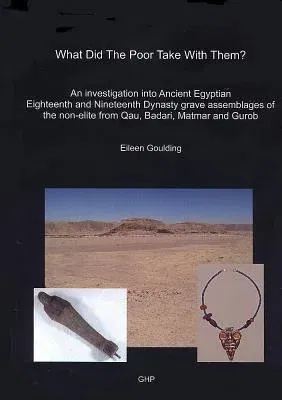Eileen Goulding
(Author)What Did the Poor Take with Them?: An Investigation Into Ancient Egyptian Eighteenth and Nineteenth Dynasty Grave Assemblages of the Non-Elite from QaPaperback, 31 October 2013

Qty
1
Turbo
Ships in 2 - 3 days
Only 4 left
Free Delivery
Cash on Delivery
15 Days
Free Returns
Secure Checkout

Print Length
136 pages
Language
English
Publisher
Golden House Publications
Date Published
31 Oct 2013
ISBN-10
1906137323
ISBN-13
9781906137328
Description
Product Details
Author:
Book Format:
Paperback
Country of Origin:
GB
Date Published:
31 October 2013
ISBN-10:
1906137323
ISBN-13:
9781906137328
Language:
English
Pages:
136
Publisher: